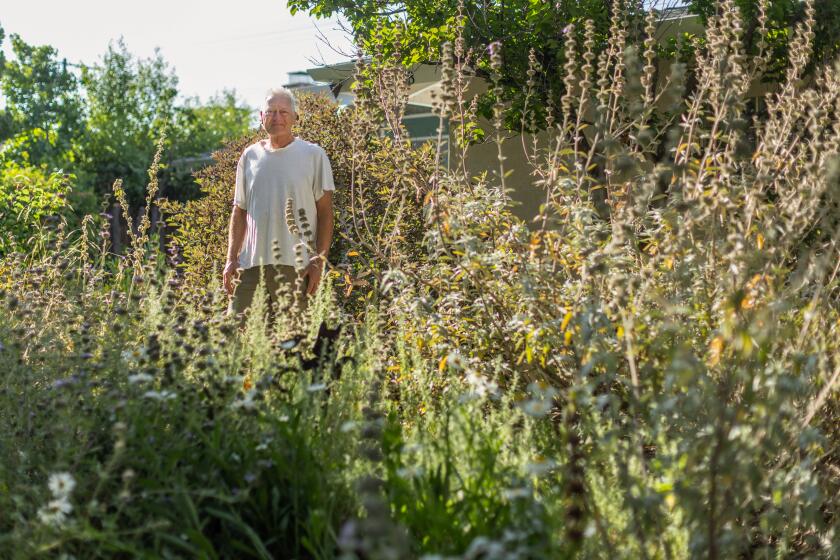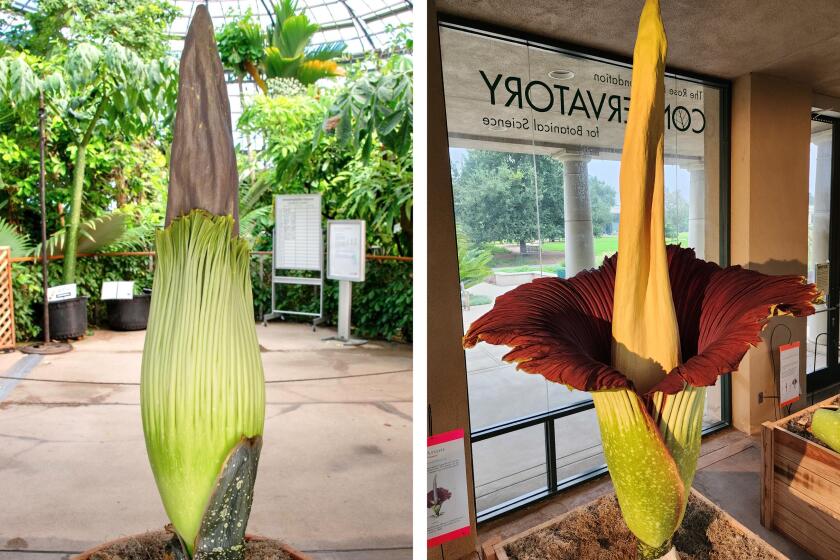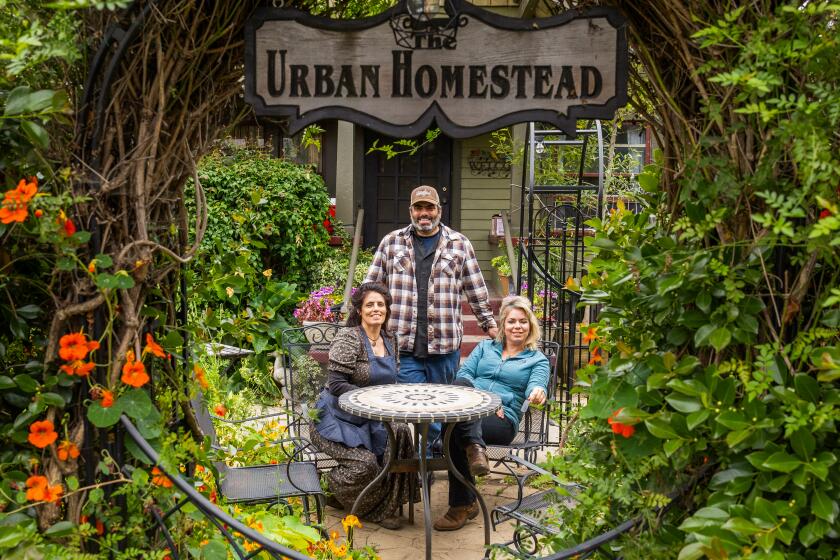Getting the Picture : What Makes a Garden Work Isn’t Always Apparent
It’s easy to conjure up a peaceful garden setting filled with trees and flowers, and perhaps even the sounds of birds and bubbling water. I can see it all now. But getting that imagined scene to come to life is an altogether different matter. Something is always missing, and that something usually turns out to be an intangible.
Sound, for instance, is important to the overall feel of a garden. In my own yard is a bottle-brush tree that couldn’t have been located in a worse place; it shades the fruit trees behind it and each year drops several rounds of litter on the lawn. But it’s the local pub for countless birds. Many of them are busy eating the tiny seeds or slurping up the nectar from the flowers, but others just seem to like to congregate there because it’s an open and airy gathering place where they aren’t likely to be surprised by cats. And even though I’ve put an X through it on several plans for the garden, when the time comes to actually get out the saw, I have a change of heart--if it were gone, the only sounds left in the garden would be distant and very city-like.
Other sounds are equally essential to a garden--rustling leaves, for example. Bamboo serves this purpose in my garden; its dry, hard leaves make noises in the slightest breezes. During a Santa Ana wind, the bamboo is perhaps too boisterous, but that’s because it’s right outside the bedroom window and bangs against the house. At least I know when the wind has come up.
If I begin to scrutinize my visions of a perfect garden, I notice other things off to the sides. Usually the perceived picture is framed by something--and as it comes into focus, what I see most likely are branches from a tree overhead, or hedges to either side. Framing the picture is as important in garden-making as it is in picture-taking. If you step out the back door and see the garden in its entirety, it looks very flat and lifeless. But walk through something on the way, or pass under something, and your entry into the garden has much more dimension.
One of these “somethings” could be a tree right outside, or a patio with a trellis overhead and vines clambering through it, or plants scattered to either side. The idea is to frame that initial view and not reveal all of it at first glance.
The background of my imaginary garden is always indistinct, as such things are wont to be, but it’s always dark green in color. If the trees and shrubs by the back door are the frame, this dark-green backing is the mat my mental picture is mounted on.
Such a setting is difficult to reproduce, however. Only time can provide a living background of shrubs, and in some places there simply isn’t the room to plant a decent one, even if you have the patience to wait for it to grow up. But backgrounds are so important that, wherever possible, a lawn--or a patio--should be a bit smaller than it could be to allow room for large plants at the edges. Nothing fancy--just the simplest, darkest-green shrubs you can find. A background planting covered with gorgeous flowers won’t function well at all. The idea is to plant something that has a subliminal presence, so that whatever grows in front of it stands out, literally and figuratively.
On my personal list--gleaned from the lists of others--are shrubs such as the various Prunus (especially Prunus caroliniana ‘Compacta’), myrtus, Viburnum tinus , ligustrum, rhus, photinia, pittosporums, xylosma and the like--real ho-hum stuff but perfect background plants, if all rather large.
A more careful look at my mental picture, however, reveals a hole in this wall of foliage--through which one can see off into the distance. The eye needs some escape, even if it’s only into the neighbors’ yard. So when you’re laying out a garden, leave in the scenery a gap to which the eye can wander and then peer out.
And go one step further by setting up the rest of the plantings to encourage the eye to proceed in that direction. Here is where the mental picture becomes a moving picture; one’s visions of a garden should never be still-lifes. One is always moving through the garden, and in garden design, that consideration should be paramount.
Even if the garden is too small to actually walk through, it needs a visual path. The foreground frame, the background and the gap provide a beginning and an end. The positioning of the plants that are left should carry the eye upward and downward, over the taller ones, down into the shorter and onward like a gentle roller-coaster ride.
Highlights of color should be present here and there to catch the wandering eye and make it consider its surroundings--but not for so long that it can’t be free to continue its journey through the garden. And along the way should be the sounds, the smells and those other peripheral elements that are so important to the whole.



